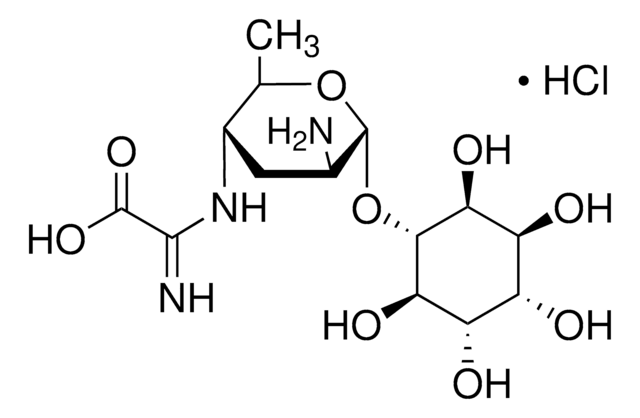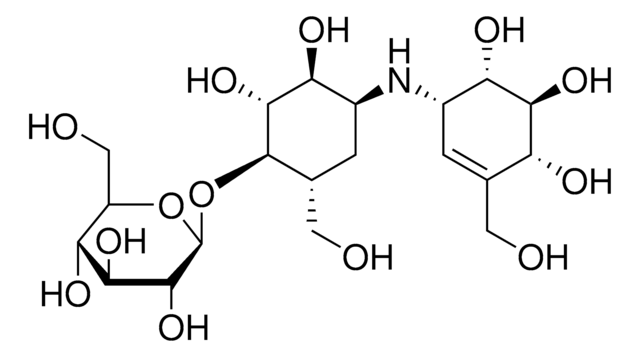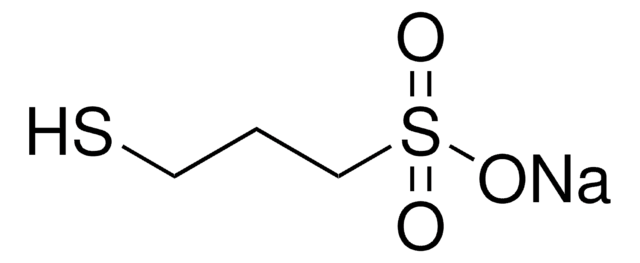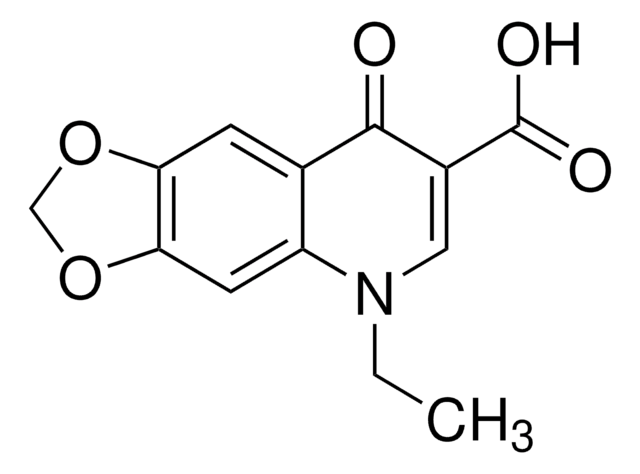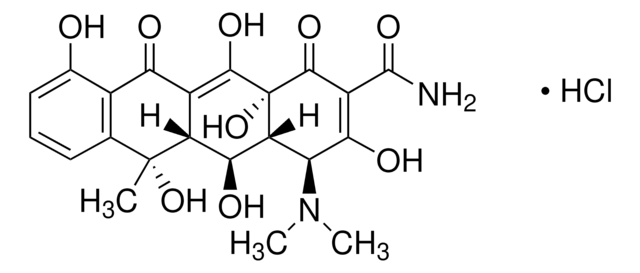Wichtige Dokumente
K4013
Kasugamycin -hydrochlorid aus Streptomyces kasugaensis
Synonym(e):
3-O-[2-Amino-4-[(carboxyiminomethyl)amino]-2,3,4,6-tetradeoxy-D-arabino-hexopyranosyl]-D-chiro-inositol
About This Item
Empfohlene Produkte
Biologische Quelle
Streptomyces kasugaensis
Qualitätsniveau
Form
powder
Farbe
white to off-white
Wirkungsspektrum von Antibiotika
Gram-negative bacteria
Gram-positive bacteria
Wirkungsweise
protein synthesis | interferes
Lagertemp.
2-8°C
SMILES String
C[C@H]1O[C@H](O[C@H]2[C@H](O)[C@@H](O)[C@@H](O)[C@H](O)[C@@H]2O)[C@@H](N)C[C@@H]1NC(C(O)=O)=N.Cl
InChI
1S/C14H25N3O9.ClH/c1-3-5(17-12(16)13(23)24)2-4(15)14(25-3)26-11-9(21)7(19)6(18)8(20)10(11)22;/h3-11,14,18-22H,2,15H2,1H3,(H2,16,17)(H,23,24);1H/t3-,4+,5+,6-,7+,8+,9-,10+,11+,14-;/m1./s1
InChIKey
ZDRBJJNXJOSCLR-NZXABURVSA-N
Suchen Sie nach ähnlichen Produkten? Aufrufen Leitfaden zum Produktvergleich
Verwandte Kategorien
Allgemeine Beschreibung
Anwendung
Biochem./physiol. Wirkung
Lagerklassenschlüssel
11 - Combustible Solids
WGK
WGK 2
Flammpunkt (°F)
Not applicable
Flammpunkt (°C)
Not applicable
Persönliche Schutzausrüstung
Eyeshields, Gloves, type N95 (US)
Hier finden Sie alle aktuellen Versionen:
Besitzen Sie dieses Produkt bereits?
In der Dokumentenbibliothek finden Sie die Dokumentation zu den Produkten, die Sie kürzlich erworben haben.
Unser Team von Wissenschaftlern verfügt über Erfahrung in allen Forschungsbereichen einschließlich Life Science, Materialwissenschaften, chemischer Synthese, Chromatographie, Analytik und vielen mehr..
Setzen Sie sich mit dem technischen Dienst in Verbindung.